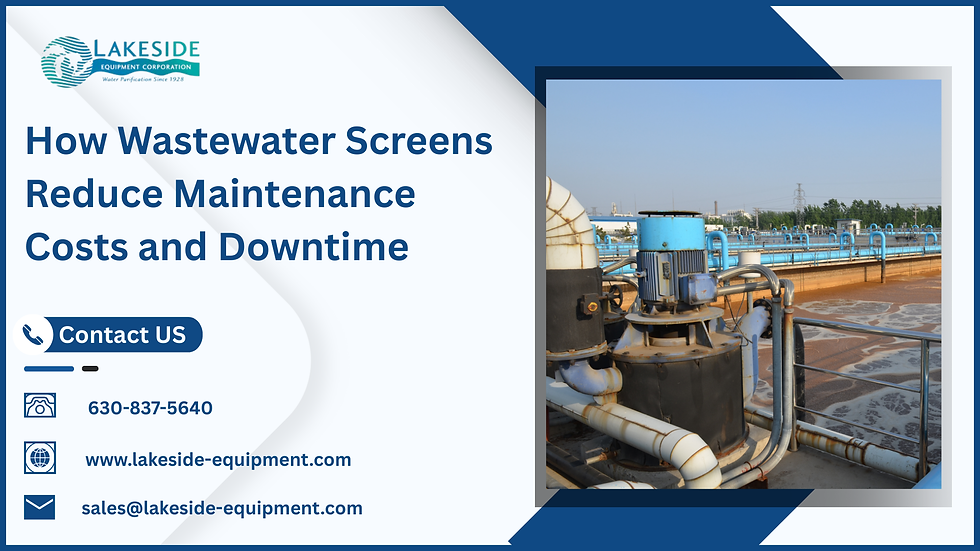Tips To Select The Best Wastewater Screens
- lakesideequipment

- Sep 3, 2024
- 3 min read
Intoxicated and dirty water that flows from residential areas and industrial facilities before being released into the environment is called wastewater. Sewage management is exercised so as to retain the healthy state of the environment and also to ensure the water used for domestic purposes is safe for human consumption. It must develop other stages with certain equipment for performing distinct operations.
Let us dive deeper into this blog and learn in detail about the best wastewater bar screens and clarifiers.
How Do Wastewater Screens Work?
Both treatment steps require wastewater clarifiers to be used. In this manner, it removes solid materials in the wastewater through the process of sedimentation. Sedimentation clarifiers function on the principle that the solid particles can be given enough time to sink to the bottom of a tank to be taken off.
Primary Clarifiers: In the initial stage of the treatment process, the clarifiers remove large matter and particles in the water.
Secondary Clarifiers: In the course of secondary treatment itself, the treated water segregates from the biological sludge through the help of the secondary clarifiers. This settled sludge is either returned for reprocessing or forwarded for more treatment for it to be finally disposed of.
Efficiency and Maintenance: The efficiency of a wastewater clarifier is comprised of three important elements: procedures, correctly chosen velocity, and constant maintenance.
Even in the everyday world, total waste treatment is one of the critical factors in achieving a healthy living environment. Making sure that you are able to select some of the right wastewater biological treatment services are very crucial in ensuring that you are able to live in a rather secure and clean environment.

How To Select The Best Wastewater Treatment Services?
This blog provides you with some important guidelines that will help in determining the solution that would fit best suited to you while making some critical decisions in areas that relate to wastewater screens, clarifiers, and wastewater biological treatment systems.
Fully understand wastewater treatment needs: I just want someone to fully understand before one begins the search to engage a wastewater treatment service what the requirements of your facility are. This influences the type of contaminants in your wastewater as well as the amount of water that needs the treatment process.
Dialing Up Your Wastewater Screen: Wastewater bar screens or screens are always the initial stage that is involved in the removal of large hard solids that may in one way or the other harm the machines or hinder other processes necessary within the system. This is because you need to take issues to do with screen type, including how to maintain them and their suitability for technology integration.
Wastewater Clarifiers to the Rescue: Wastewater clarifiers are very essential in centrifuging solid wastes from liquid, especially in industries. To do this, they make sure that the effluent leaving the treatment system is colorless and with no large particulate matter. When assessing the speculations clarifiers highlight design efficiency capacity and are easy to operate with full automation features.
Sludge Screening Systems: Sludge screening is the method through which it is easy to manage the solid waste collected in sludge since they are separated from each other. The main criteria that must be evaluated when selecting a sludge screening system are the screening performance capacity, adaptability, and cost per service provided for the duration of the operation.
Bottom Line
It is not a process that involves one piece of equipment or technology to enhance its efficiency. Clarifiers in wastewater biological treatment, sludge screening, biological treatment, and wastewater screens are useful tools that make sure the plant is operational and that water is safe to use.




Comments